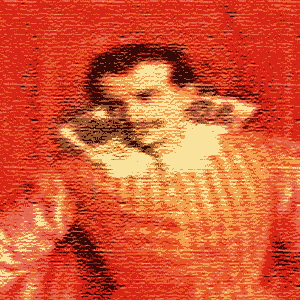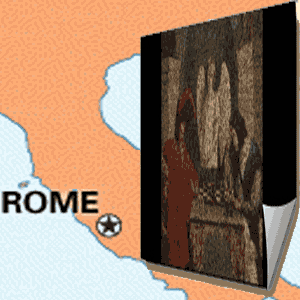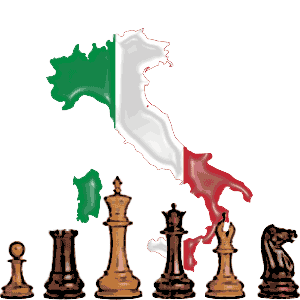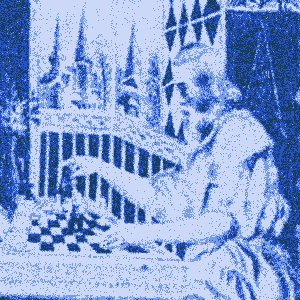Giovanni Leonardo da Cutri - Il Puttino

Giovanni Leonardo da Cutri
He was born into a family of high standing. He was known from a young age as Il Puttino (The Small Child). He studied law in Rome and was able at some point to devote all of his energies into the study of chess. He began the long road to eclipse Ruy Lopez de Segura.
His strength grew and legend has it that when his brother was kidnapped by pirates he made a deal to play for his brother's freedom. Not only did he secure this with a fine win but he also relieved the pirate captain of 200 ducats into the bargain.
First Meeting with Lopez in Rome

Giovanni Leonardo da Cutri: Ruy Lopez faces Leonardo in Rome
He moved ahead of great masters like Giulio Cesar Polerio and Tomaso Caputi. Only Paulo Boi of Syracuse could rival him in Italy, when he had reached the age of 18. King Phillip II of Spain sponsored his champion, Ruy Lopez to travel to Rome in 1560.
There he would take on the strongest Italian players. He did and swept them all aside including Leonardo and Boi. Ruy Lopez was proclaimed the World Champion and honor was bestowed on King Phillip. Much like the political undertones of Fischer's win over Spassky during the Cold War many centuries later, it is likely that this victory in Rome carried with it a political statement from Spain.
Licking Wounds in Naples

Giovanni Leonardo da Cutri: Medieval Naples
Leonardo went to Naples and immersed himself in chess for two years. He was young and sure enough he continued to grow stronger and stronger.
He did suffer a further defeat to Lopez in 1572, again in Rome, but he was undeterred. This man was on a mission to become the strongest player in the world. Il Puttino, as he was called in reference to his slight build, would be a lion on the chess board.
Rematch in Madrid

Giovanni Leonardo da Cutri: Leonardo defeats Lopez
The four would each play each other in matches needing three wins for a victory. After the round robin, the top two would play off for the grand prize. Giovanni lost his first two games against Ruy Lopez in their match. Some say this may have been because he was nervous to play in front of the Spanish King.
Whatever the reasons he recovered his composure and began to play well. He turned the match on it's head by winning the next three to defeat the famous Spanish Bishop. Boi also beat Lopez in their match and the two Italians were above the two Spaniards after all matches had been played.
They would play for outright victory and Leonardo overcame his old rival Boi to win the tournament. It was a great victory for Italian chess and marked the beginning of two centuries of Italian dominance. Italy had replaced Spain as the leading chess nation.
The Champion Visits Lisbon

Giovanni Leonardo da Cutri: Leonardo went to Lisbon
Phillip sent a letter of congratulations to John of Austria, then the acting Regent for Italy. Leonardo's home town of Cutro was exempted from taxation for the following 20 years in honor of the triumph he had won for Italy. Furthermore it was given the title City of Chess. The event is commemorated in Cutro annually to this day.
Leonardo and Boi were both invited to Portugal by Phillip's nephew, King Dom Sebastian I. There they faced Sebastian's champion El Morro, where again they both prevailed. During his stay Sebastian dubbed Leonardo Il Cavaliere Errante (The Wandering Knight) due to his long time away from home. He eventually returned to Italy and settled in Naples. From there he continued to dominate chess for many years under the patronage of the Prince of Bisignano.
Legacy of Leonardo

Giovanni Leonardo da Cutri: Legacy of Italian Chess
Notwithstanding that, the impact of anyone going to the Spanish court and defeating the leading Spanish masters in front of Phillip II must have reverberated around Europe. It challenged the theory of peerless Spanish intellect.
Italy never unseated Spain as the foremost European power in the political realm but she certainly did in the chess world. Several Italian masters would walk the road paved by Leonardo and Boi over the next 200 years as Italy moved to the fore in terms of chess.
Moving On

Paulo Boi
He, along with Paulo Boi, turned Italy into a powerhouse. Great players like Polerio, Salvio, Greco and others would follow one after the other. It would be the 1700s before France would produce players who could rival the Italians.
The Italian Game became a hugely popular way to start the game. This opening gave rise to open, attacking chess on the Kingside and would lead right in the Romantic Era of the 19th Century. Only then were the ideas of Ruy Lopez dusted off and re-evaluated.






